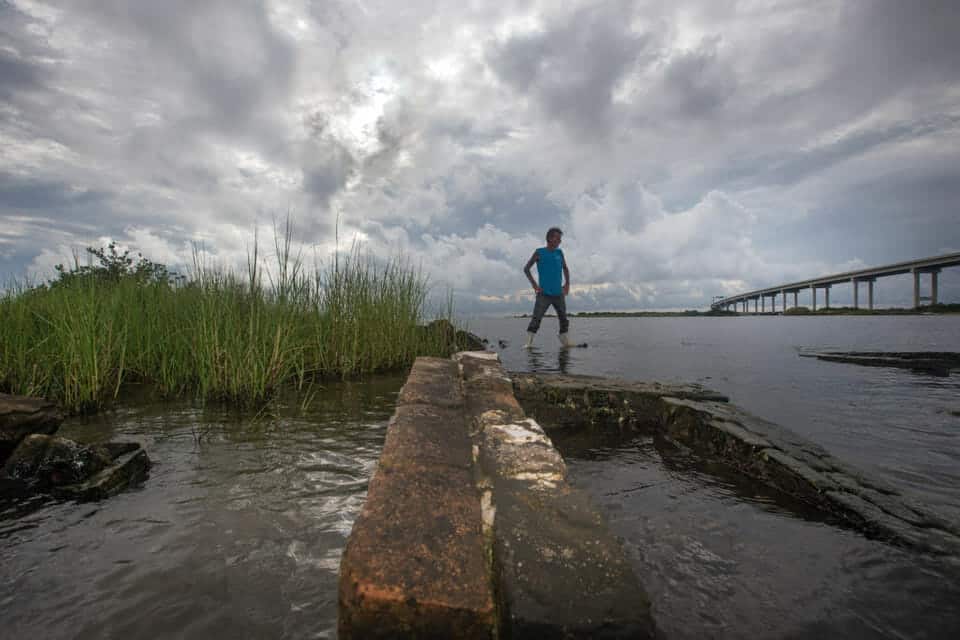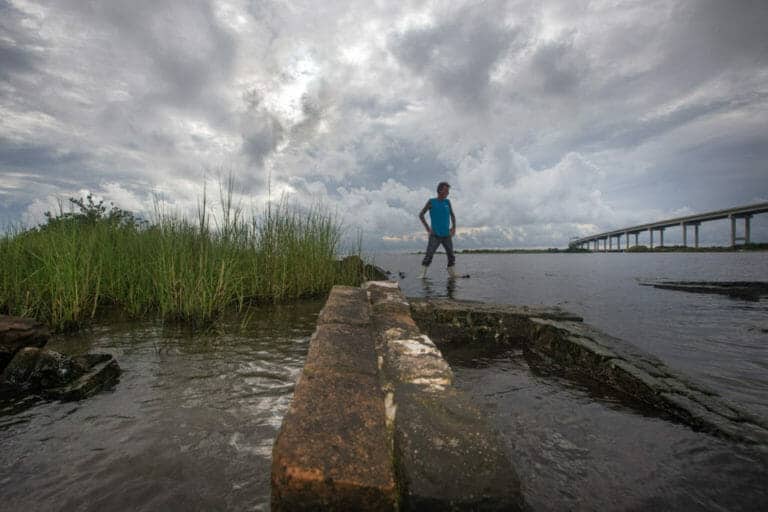Leeville resident Talbot Serigny, visiting the Lefort Cemetery in August 2017, appears to walk on water as he balances on the brick. Serigny grew up across the bayou from the cemetery and has watched it slowly sink beneath the water with the passing decades. (Photo by Ted Jackson, NOLA.com | The Times-Picayune)
Talbot Serigny edged his johnboat toward a forsaken spit of land. His labored arms showed the colors of tattoo ink and heavy doses of sun.
He killed the outboard near tall grasses awash with driftwood and trash, and glided along on a falling tide flowing out on Bayou Lafourche, through small mounds of broken brick. Leaning over the gunnel, he stabbed a stick into the soft muddy bottom, over and over until he tapped something solid.
"There’s another one," he exclaimed.
“We’re losing the bottom of our state like a piece of fabric that is unraveling,” — Jessica Schexnayder
Talbot seems to have a sixth sense of the hidden layout of graves crumbled just out of sight — the resting places of south Louisianians who lived, died and were buried long before the land began to sink and the waters began to rise. He has a talent for finding now-submerged cemeteries, a sense he earned by watching the changing tides and the changing landscape from across the bayou. This waterway and the town of Leeville along its banks were Talbot’s childhood playground.
Born in 1961, he grew up on his grandfather’s houseboat, moored directly across the bayou only a few hundred feet away. The mooring, long abandoned, is now shadowed by a massive concrete bridge linking the […]
Full article: Buried at sea: As cemeteries on Louisiana’s coast wash away, so does history



